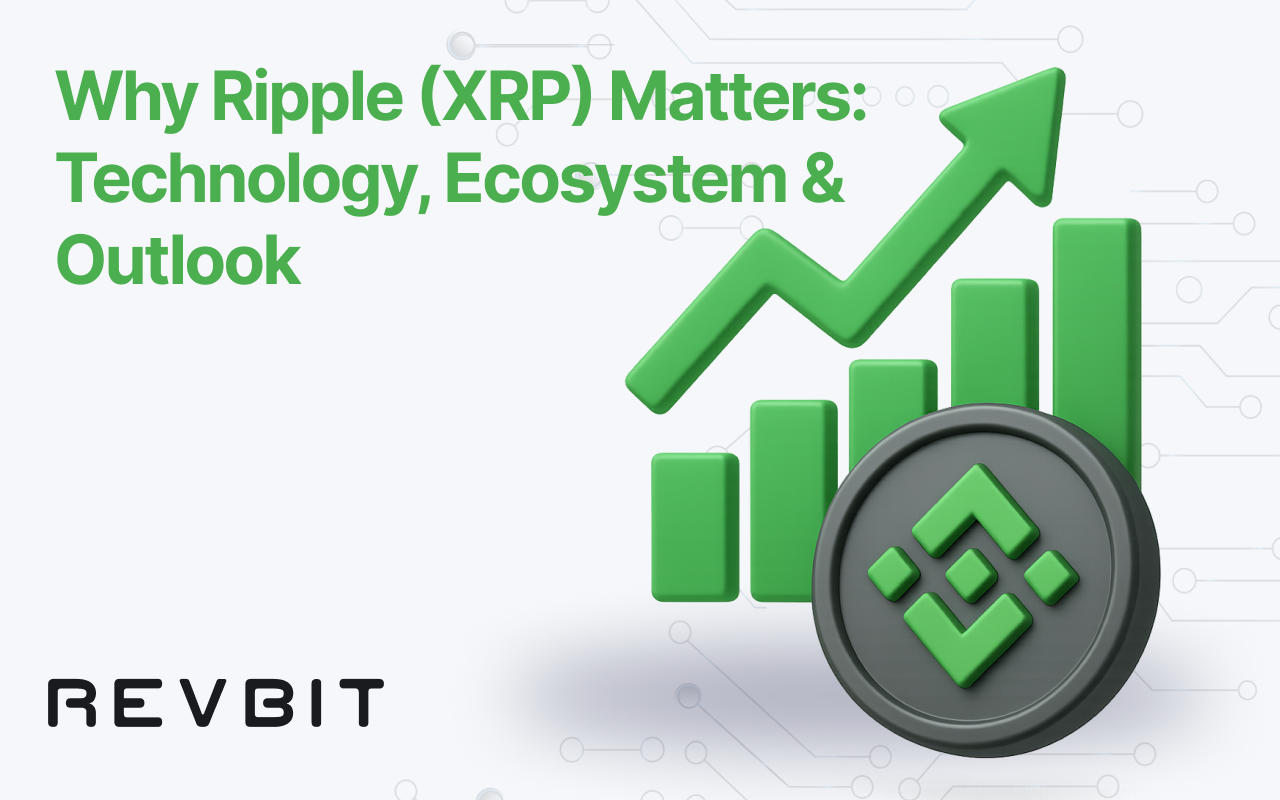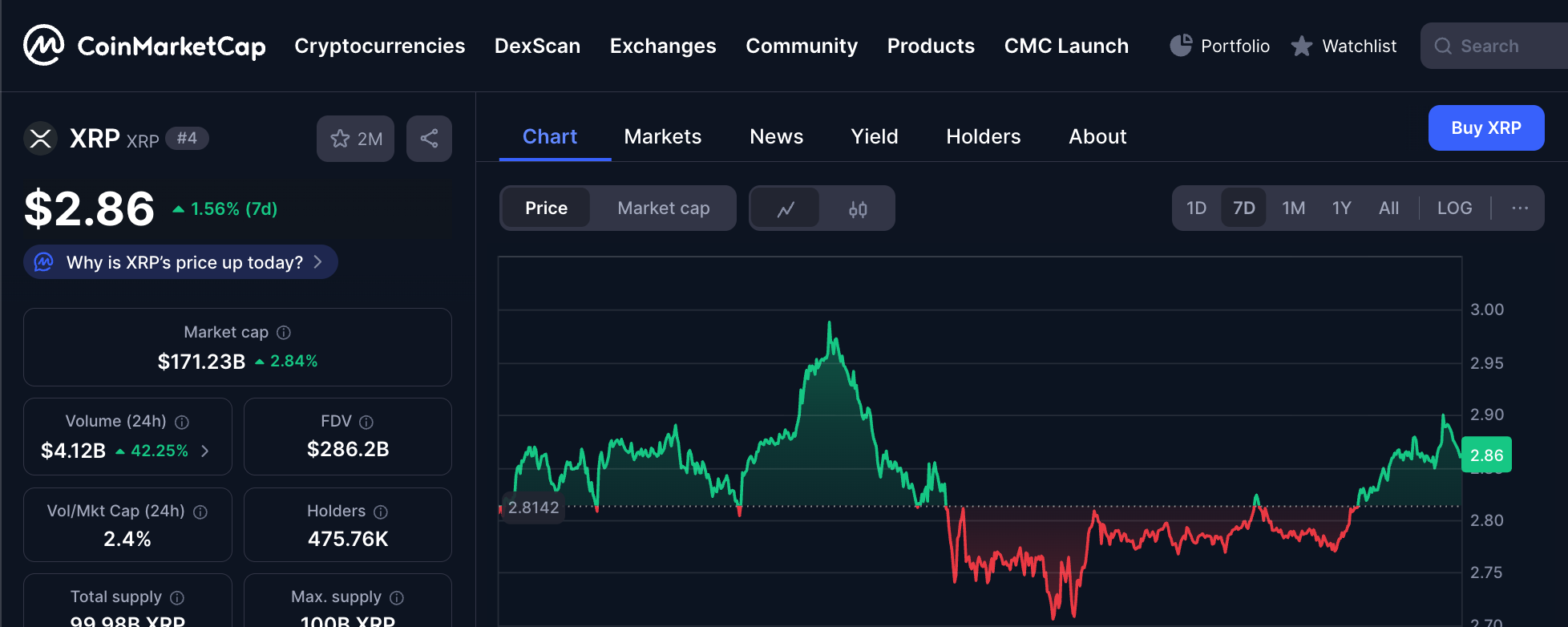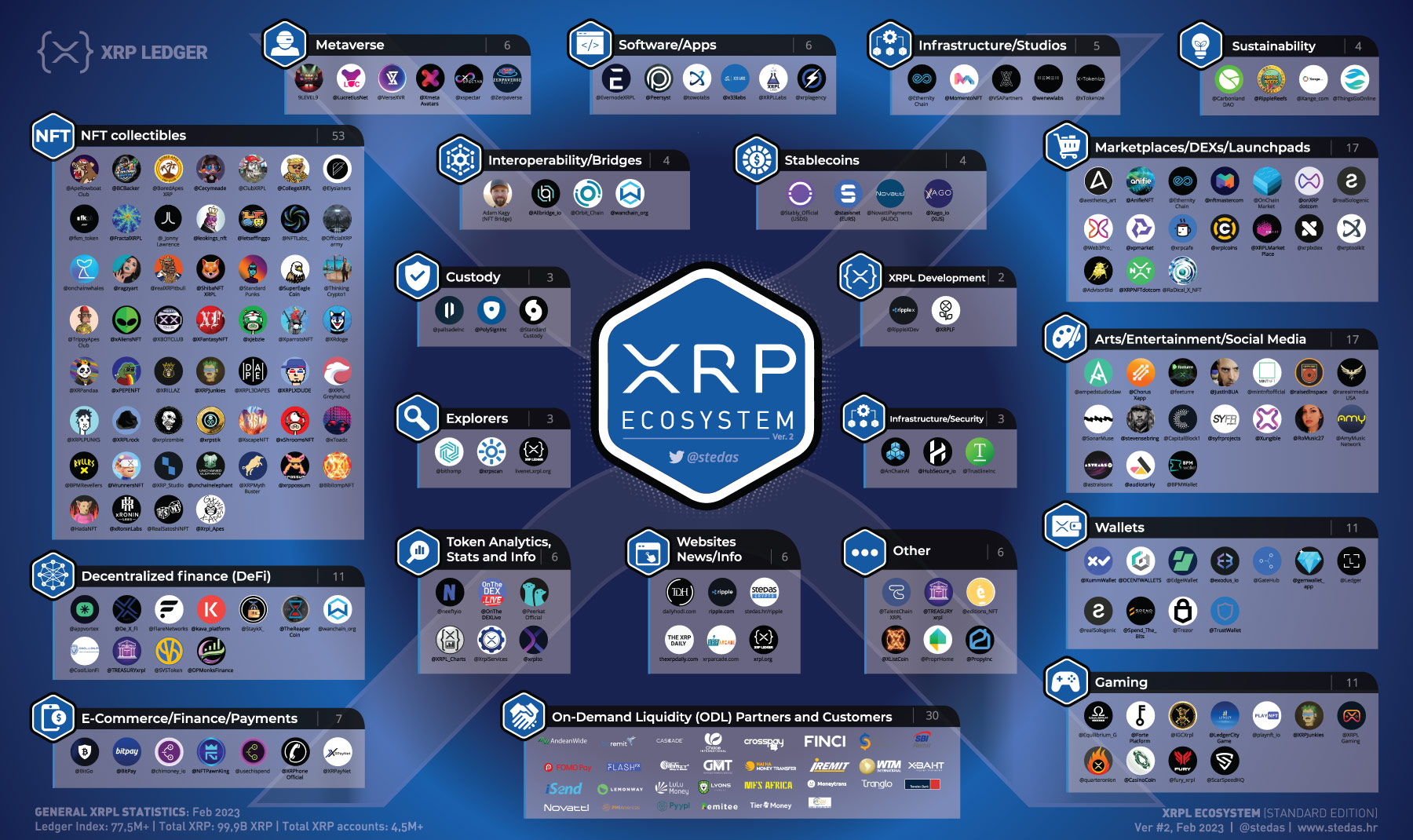
What Is Ripple (XRP)?

Source: Coinmarketcap
At its core, XRP is the native asset of the XRP Ledger (XRPL) with its own XRP ecosystem —a public, permissionless layer-1 blockchain launched in 2012 and maintained by an independent validator community. XRPL was designed for fast, low-cost payments, with transactions typically finalizing in 3–5 seconds and fees measured in fractions of a cent (the base fee is 10 “drops,” or 0.00001 of XRP price, adjusted dynamically as an anti-spam measure).
XRPL’s governance is built around amendments: new features activate only after ≥80% validator support for two weeks, reinforcing decentralization and safety when the protocol evolves. There are 150+ validators on the network and changes that affect consensus require supermajority approval; Ripple, the company, is a contributor—not a controller—among many participants.
XRPL emphasizes sustainability: there’s no mining, and its consensus model is energy-efficient, so you can exchange XRP to USDT easily.
Key Use Cases
1) Cross-border payments & FX.
XRP’s most famous role is as a bridge asset that can unlock fast settlement between currencies, cutting pre-funding and fees. In production, SBI Remit in Japan uses XRP to route remittances into bank accounts across the Philippines, Vietnam and Indonesia—a concrete, bank-grade corridor live since 2021 and expanded in 2023.
This matters because cross-border payments remain costly and slow for many corridors: the World Bank tracks a global average remittance cost above 6%, with the G20 targeting ≤3% by 2030. Faster, cheaper rails directly address that policy gap.
2) On-chain trading (DEX/AMM).
XRPL has a built-in decentralized exchange (DEX) that has existed for years and supports tokenized IOUs, XRP pairs, and cross-currency paths without smart contracts. In March 2024, an Automated Market Maker (AMM) (XLS-30) was enabled on mainnet, adding native liquidity-pool trading. (An implementation bug later prompted a fix through the amendment process—an example of transparent, community-governed upgrades.)
3) Tokenization & NFTs.
XRPL natively supports non-fungible tokens via XLS-20 (live since Nov 2022), enabling minting, transfers, and marketplaces like xrp.cafe to operate at low cost.
4) Stablecoins & real-world finance.
Ripple launched Ripple USD (RLUSD)—a USD-backed stablecoin available on XRPL (and Ethereum) for enterprise payments and tokenized cash management. In 2025, Ripple announced RLUSD initiatives with global partners, signaling deeper settlement options on XRPL.
XRP Ecosystem Components

Source: Stedas
DApps
- DEX & AMM front-ends: Because the exchange logic is native, developers can build simple interfaces that speak directly to the ledger for order-book and AMM trades—no external smart contracts needed. That keeps complexity (and attack surface) lower than on many L1s.
- NFT marketplaces & tools: With XLS-20 live, minting and trading can be done on-ledger; projects like xrp.cafe highlight creator tooling and consumer UX on XRPL.
- Oracles & infra: Ecosystem posts note DIA oracles live on XRPL, aiding price feeds for DeFi-style apps.
Partnerships
- SBI Group / SBI Remit: A flagship real-world deployment using XRP as a bridge for remittances from Japan into Southeast Asia. SBI’s investor deck (June 2025) reiterates XRP’s role via the SBI Ripple Asia JV.
- Tranglo (APAC hub): Ripple acquired 40% of Tranglo to extend XRP-enabled payout reach across Southeast Asia—an infrastructural play to increase corridor coverage.
- Ripple enterprise network: Ripple Payments (formerly ODL) continues to position XRPL and RLUSD for fiat and stablecoin payouts in 90+ markets, giving businesses multiple rails. (Not every partner uses XRP in every flow, but the rails and tooling are there.)
Community and Adoption
- Open-source & longevity. XRPL has been running for 10+ years with an open-source rippled codebase managed under the XRPLF umbrella; anyone can run a node and contribute.
- Performance & cost. The network’s seconds-level finality and tiny fees are not marketing slogans—they’re encoded in the protocol and documented in the public docs. For builders, this makes micropayments, retail flows, and market-making economically viable.
- Ecosystem momentum. The ledger’s native DEX, XLS-20 NFTs, and XLS-30 AMM point to a steady cadence of features added through the amendment vote model (≥80% support). That governance process makes upgrades predictable yet conservative.
Why it resonates with policymakers and banks: global institutions—from the BIS/CPMI to the World Bank/IMF—continue to push for faster, cheaper cross-border payments. XRPL’s design lines up with these targets by emphasizing speed, finality and low operating cost, while enterprise rails (Ripple Payments, RLUSD) offer compliance-aware options for those who need fiat/stablecoin endpoints.
Long-Term Potential
Utility-driven value. The XRP ecosystem utilities that matter most going forward are the ones users can feel:
- Cash-like settlement speed for retail remittances and B2B treasury moves (where pre-funding is expensive).
- On-ledger markets that remain usable even at small ticket sizes (native DEX/AMM), enabling more granular liquidity and arbitrage without the fragility of bespoke smart contracts.
- Tokenization that is simple enough (and cheap enough) to make NFTs, RWAs, and loyalty points practical, not just pilot-ware.
Adoption vectors to watch (XRP adoption forecast):
- Remittance corridors that expand from wallet cash-outs into bank-account payouts (as in SBI Remit’s setup) are sticky and high-volume.
- Stablecoin settlement (RLUSD) alongside XRP could catalyze more enterprise flows into XRPL, especially in regions explicitly enabling these instruments.
- Developer traction around AMM and on-ledger DEX tooling—if front-ends mature and LP incentives are aligned, XRPL could become a specialist venue for FX-style token swaps.
Risks & realities. XRPL ecosystem competes with other payments-first L1s and with bank/fintech rails improving under the G20 Roadmap. Regulatory clarity varies by market, and not all Ripple customers route flows through XRP. The network’s cautious amendment process (a feature for safety) can also slow the pace of shipping. In short: the XRP long-term outlook depends on continued, measurable utility growth across corridors, marketplaces, and tokenized assets—not hype.
Conclusion
Here is your XRP ecosystem explained in plain language:
- What is XRP? It’s the native asset of a mature, fast, low-cost, energy-efficient L1 built for finance.
- XRP use cases: cross-border payments/FX, a native DEX and AMM for on-chain trading, and tokenization/NFTs—all live on XRPL today.
- Ecosystem & partners: real-world corridors (e.g., SBI Remit), a growing developer base, and enterprise rails (Ripple Payments, RLUSD) expanding the toolkit for institutions.
The XRP long-term outlook is ultimately a utility story: does XRPL continue to reduce payment frictions, lower costs, and add rails that businesses actually use? In 2025, the ingredients—speed, cost, governance, and live corridors—are there. The next leg is scale.